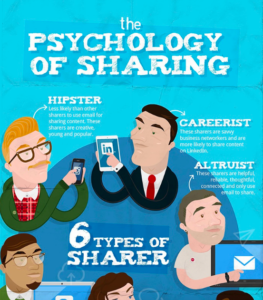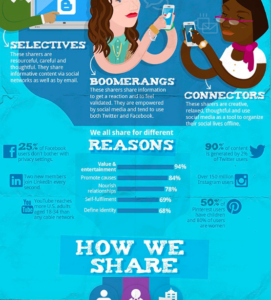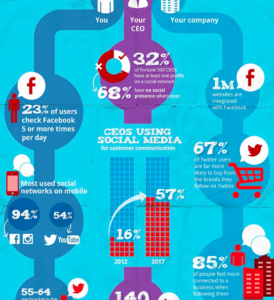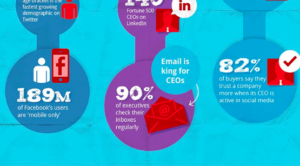The Psychology of Sharing Social Media Content (Infographic)
Social media plays a big role in a lot of companies marketing strategies and it has become a part of our everyday lives so it’s important that you know the psychology of social media sharing.
We all share social media content for different reasons and in different ways. What are yours?
This infographic shows how all of us can be characterized and categories into different categories based on how and why we share content.
Whether you are social sharing personally, in business or as a powerful tool to build brand awareness, this infographic is for you.
According to a study made by The New York Times, the sharing types on social media can be divided into 6 different categories. These categories are telling a bit about the sharer and their sharing activity.
There are different reasons we share content
This infographic takes on the different reasons behind social sharing, but there’s one thing that almost all sharers can agree on. 94% of the people in the study agreed on the fact that bringing value to the social network is the main goal when posting on social media.
84% said that the reason they share things on social media is to draw awareness to things they care about.
78% said that the reason they share content is to “nourish relationships” where social media works as a tool of connecting them with people in their industry or niche
How we share it
We all have out reasons for social sharing. Over the years, it has become increasingly popular to share content to be seen online and surprisingly enough, even the CEOs have started to share content and expose themselves to increase visibility in a way that we didn’t think was possible a few years ago.
The people who share content can be divided into three “categories” and the way we share content can be divided into 6. The people who share content can be divided into you, your business and your CEO.
The evolution of CEOs social media sharing has been more slowly evolving than the other two categories (as expected), with 68% of Fortune 500 CEOs having no social presence whatsoever.
The CEO sharing is going in the right direction however. In 2012, only 16% of CEOs used social media as a tool for connecting with their audience. That number is expected to grow to 57% by 2017 and it is slowly but surely getting there.
Apart from social media, email is still (not unsurprisingly) the most popular tool for CEOs when it comes to sharing information and connecting with others, with 90% of the group checking their email mailboxes regularly.
The way people are checking social media has changed
23% of Facebook users are checking the platform five or more times a day. It has also become more common to share and visit the platform “on the go” thanks to the dramatic increase of smartphones. Sharing with your phone only takes a few seconds and it can be done almost at anytime, anywhere. When it comes to sharing on the go, Facebook and Instagram are the main go-to platforms so, the fact that 189 million Facebook users are ‘mobile only” is not surprising.
It is not only the younger generation that is growing when it comes to social sharing either. People in the age of 55-64 age group is currently the fastest growing demographic on Twitter.
The popularity of social media as a business marketing tool is, however, something that is hard to ignore. Statistics shows that there are now over 1 million websites that are connected and integrated with Facebook.
There’s a good reason to the increased popularity of social media brands as you can expect. 67% of Twitter users saying they are more likely to buy from brands that they follow and the reason for that might be that 85% of the people feel more connected to businesses when they are following them on social networks.
A very interesting point is that 82% of buyers are saying that they trust a company more if its CEO is active in social media so if you’re a CEO, maybe you should start considering using social media.
The Psychology of Sharing Social Media Content (Infographic)






